The world of sled dogs
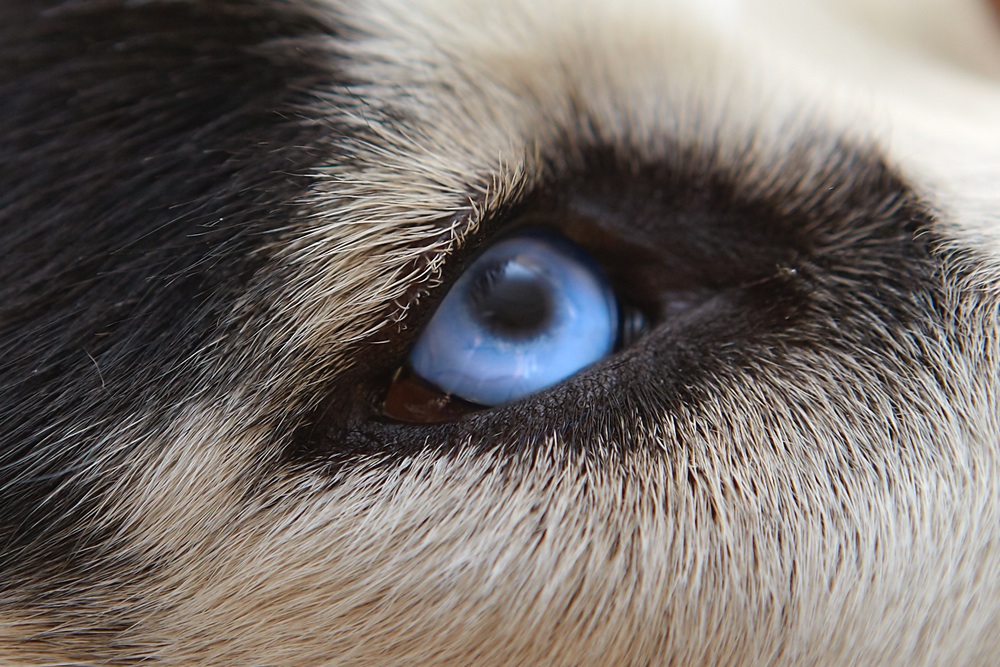
Eskimo legend tells how when the Earth was breaking into two pieces, all the animals fled to safety, apart from the dog which was struggling on the abyss. A man turned and called the dog to come to him. It leapt back on to firm ground, and from that moment onwards, they have been inseparable companions. Certainly, dogs have provided a vital lifeline for people in the harsh landscape of the far north.
Sled dogs can be recognised by their distinctive wolf-like appearance. Pricked ears, a dense coat which gives excellent protection against the cold and a tail which can be curled forwards over the body are characteristics of these breeds. One or both eyes may be a distinctive shade of blue eyes.
Types of sled dog
The Siberian husky is considered to be the best of the sled breeds. These huskies are fast and powerful dogs, in spite of their relatively small size, and they work together well as a team. They weigh about 27kg (60lb) each.
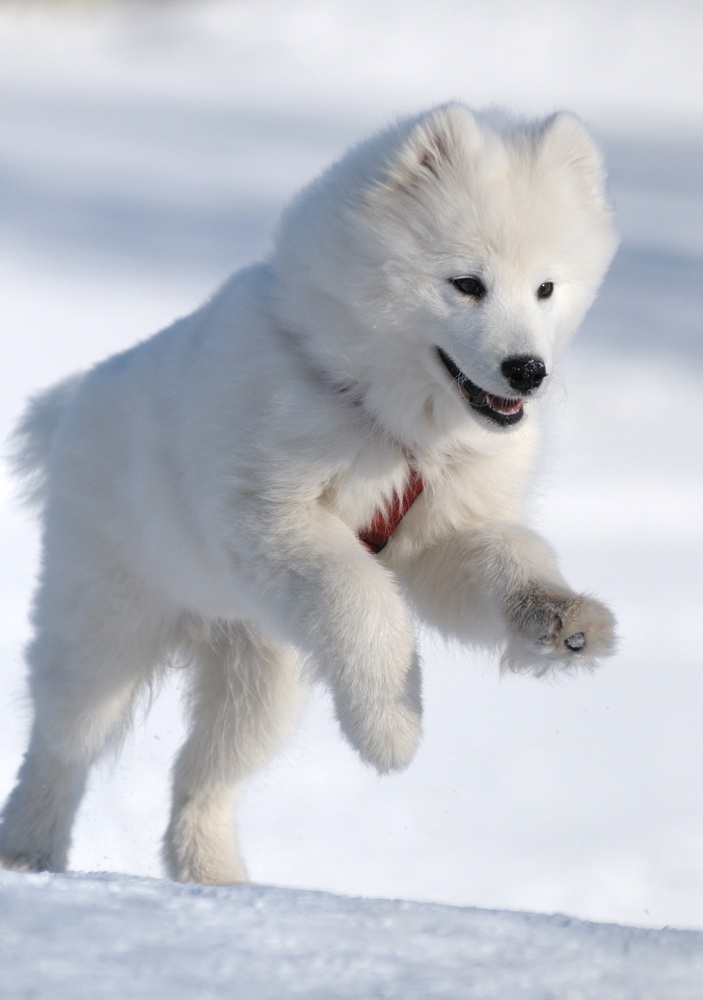
Another sled breed from this part of the world is the Samoyed, which today is bred basically in a pure white form, although bi-colours individuals were originally quite common. Friendly by nature, these dogs have rather independent natures. The rarest of the sled breeds is the Greenland dog, which has been bred in its homeland for centuries, providing a vital means of transport here through the long snowy winters.
The largest member of this group of dogs is the Alaskan Malamute. Its unusual name comes from an Indian tribe whose homeland was in the north-west of Alaska. Powerfully-built, Malamutes do not have the speed of the Siberian husky, but they are more powerful, which has led to them being nicknamed “the freight train of the north”. Standing about 64cm (25in) tall at the shoulder, these dogs weigh about 39kg (85lb).
Dog-sledding as a sport
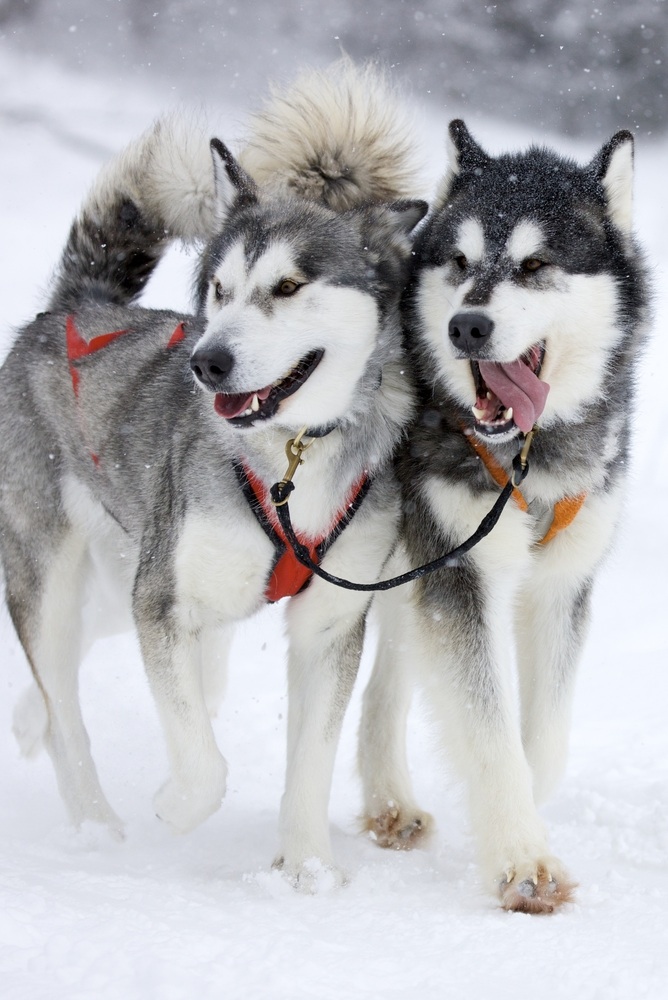
Sled dog sports have now become very popular in Europe, rivalling their popularity in North America. Photographer Rico Pfirstinger has covered many of these events, while collecting a series of stunning photographs over three years for his book called Huskies in Action.
“Happily here in Europe, the sled dog sport has been free from the criticism of other kinds of sports involving animals, “ he explains. “The main reason for this is that these dogs really do pull sleds willingly, without the 'help' of reins or whips. It is instinctive behaviour for them. Furthermore, the dogs are all given a thorough veterinary check before being allowed to compete.
“Once you have seen a race, you know the boundless enthusiasm a husky has for pulling a sled. Dogs and their so-called musher form an inseparable bond, with all sides getting their own kind of enjoyment from it.”
Its early days
Sled dogs in action.The origins of this type of racing can be traced back to the Alaskan town of Nome, at the turn of the century when the gold rush was underway. Fortunes could be made in the course of a day, by those seeking gold at the mouth of the Yukon River, but this was at a time before roads were built.
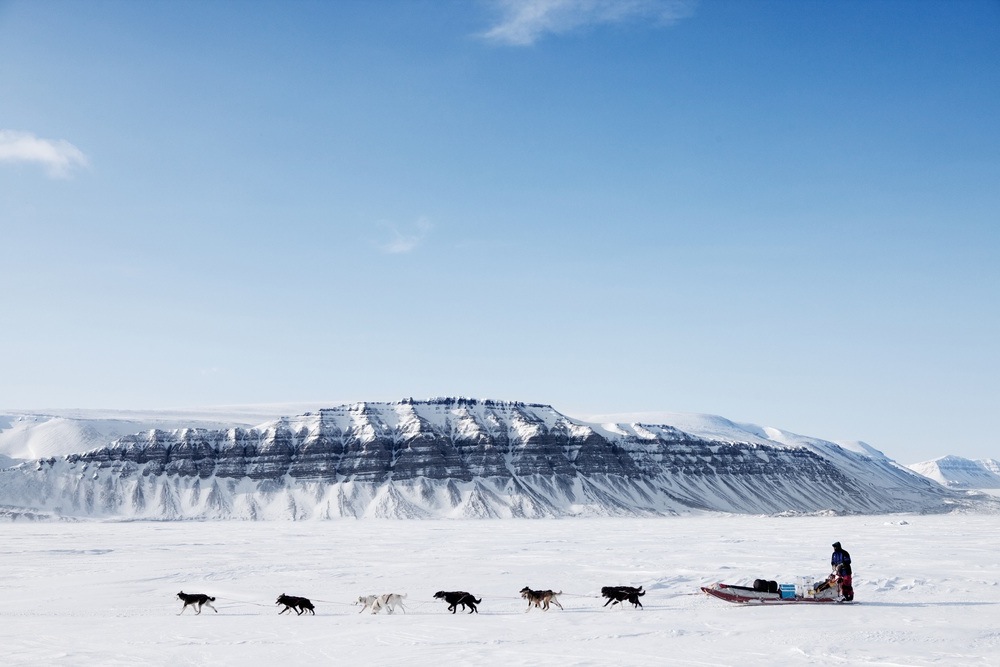
In wintertime, the only way to reach the area was by dog sled. Everything had to be bought in by this means to the camps. The prospectors organised races to pass the time when searching for gold became impossible because of the weather.
The first official event took place in 1908, along a trail indicated by the telegraph poles leading from Nome to Candle and back again - a distance of over 650km (400ml). Husky racing was then included as a demonstration sport in the 1932 Winter Olympics, held at Lake Placid.
An incredible journey
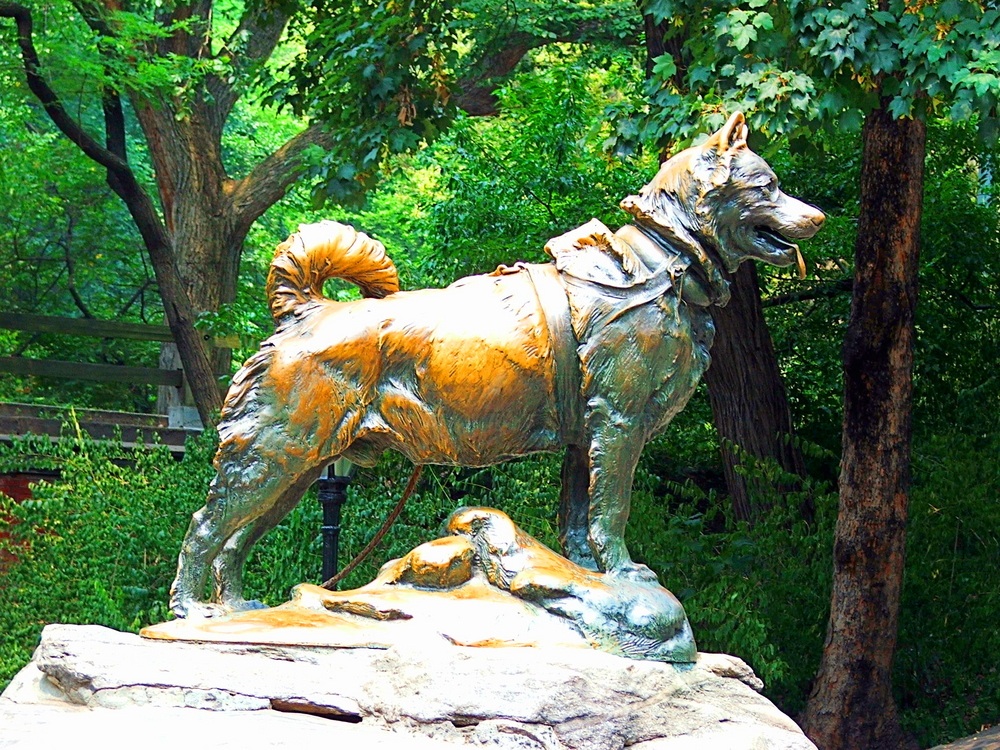
. One of the most heroic events involving sled dogs is commemorated by a bronze statute in New York's Central Park, of a dog called Balto. It was in January 1925 when diphtheria broke out in Nome, leaving its 2000 residents facing death from this illness. The only supply of antitoxin was located in Anchorage, about 1450km (900ml) away.
The weather was too bad to fly it to Nome, so it was dispatched by train to the final staging post of the Alaskan railroad - still nearly 1130km (700ml) away from where it was needed. The only hope was to organise a convey of sled dogs.
On the evening of January 27th, postman William Shannon set out in a temperature which was -45°C (-49°F). At about the same time, Leonhard Seppala harnessed up his Siberian huskies to take over at a later stage - in total, twenty different teams were mobilised. Seppala's lead dogs, Balto and Togo, were highly experienced, having already won many races.
But nothing could have prepared them for the appalling weather which they encountered on this trip. It was so bad that Seppala could not see his lead dogs. Worse still was the fact that the frozen area of sea which they were crossing was breaking up. A false move spelt certain death.
Miraculously, they arrived safely, but on the next leg, the musher lost his way, and his waiting partner. His only hope was that Balto could track back to Nome along their outward trail. Amazingly, the dog succeeded, and just over 5 days after setting out, the vital package of antitoxin was delivered safely, saving countless lives.
This event is still commemorated today by the annual Iditarod Trail Sled Dog Race. This event is run on the first Saturday in March over a course of some 1870km (1160ml) from Willow, located near Anchorage in Alaska to Nome, and is test for dogs and their mushers alike. Depending on the conditions, it can take from 9-15 days to complete the course.
Why musher ?
Sled drivers are called mushers, because in the early days, the French Canadian drivers encouraged their teams forward with the command Marche! which means walk. The English interpreted it as 'mush', and so the description of 'musher' entered the English language.
European sled racing
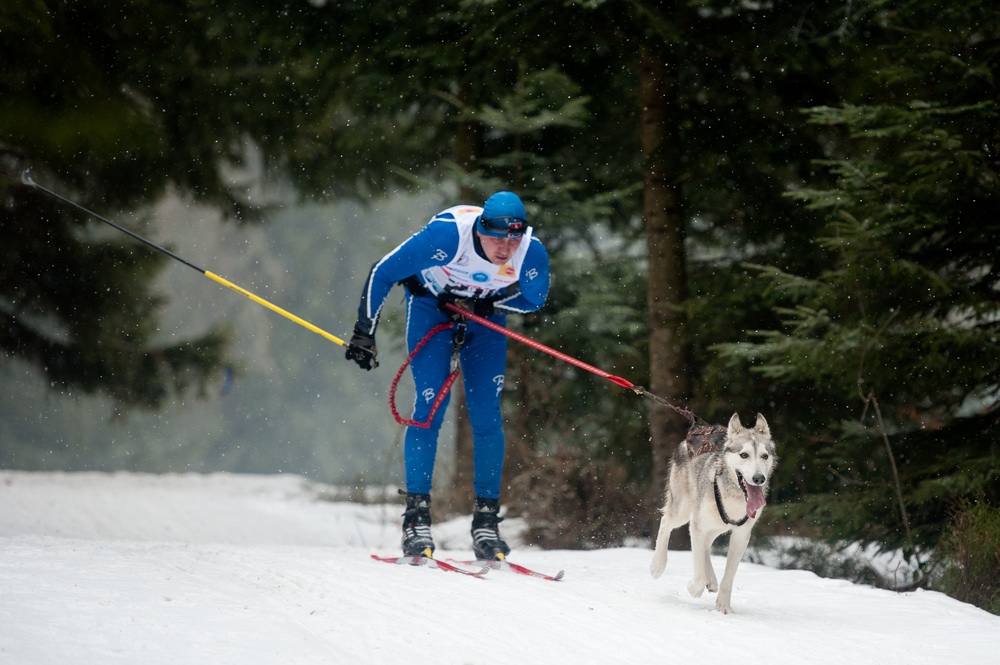
There are two types of racing - in Scandinavia especially, pulkasport is very popular, with more than 150,000 people participating in this sport today. Each dog pulls a frame weighing about 20kg (44lb), with the driver following on skis, tied to the pulka by a line. These races may cover from 5km (3ml) in the case of a rely race up to 30km (18km) for a national championship.
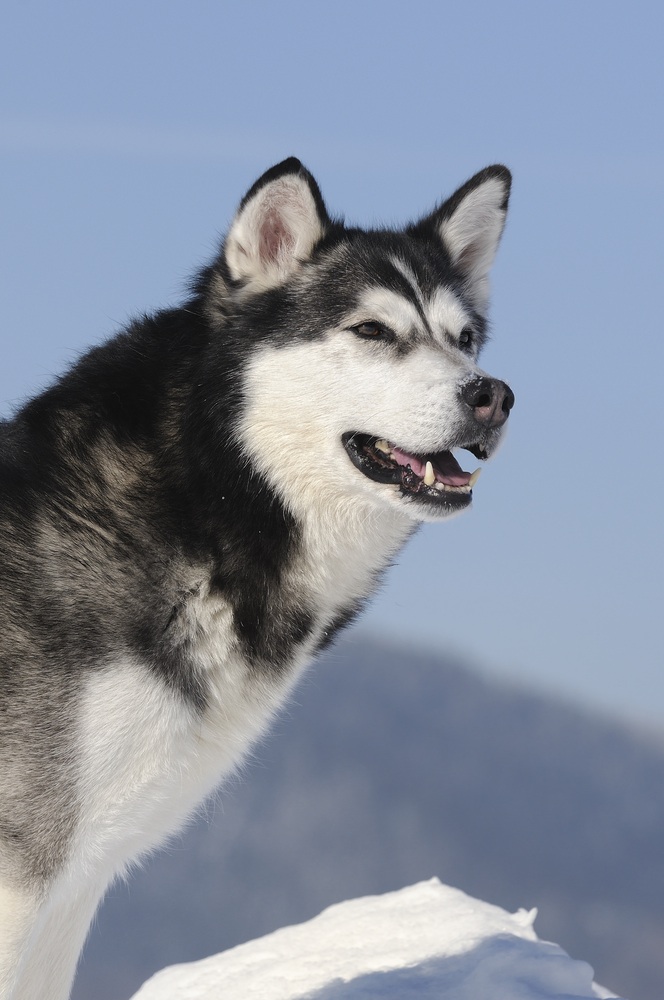
Actual racing of dogs pulling sleds originated in Central Europe, following the founding of the Nordic Dog Club of Switzerland in 1959. The first specialist club for the sport was set up in 1970, followed by the European Sled Dog Racing Association in 1983, which now organises the annual European championships.
Changes are taking place in the sport however, with cross-bred Alaskan Huskies now often being preferred to pure-bred dogs. Training is rigorous, and begins in Europe in the autumn, before the snowfalls of winter. Special training wagons are used, building up the stamina and strength of the huskies.
“These dogs are far fitter than the majority of pets. There's also no doubt in my mind that an active sled dog is much happier than one of its fellows which spends its life in a kennel or similar cramped quarters. They really seem to enjoy running,” says Rico.
*His book, which explains the development of sled dog racing and features over 120 stunning full colour photographs, can be ordered here.